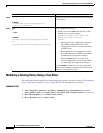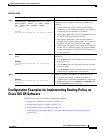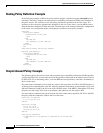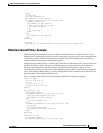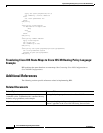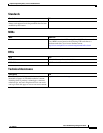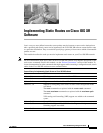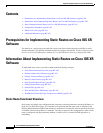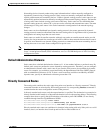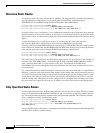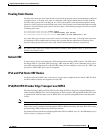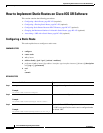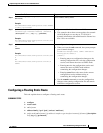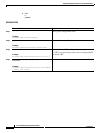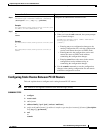
Implementing Static Routes on Cisco IOS XR Software
Contents
RC-420
Cisco IOS XR Routing Configuration Guide
OL-14356-01
Contents
• Prerequisites for Implementing Static Routes on Cisco IOS XR Software, page RC-420
• Information About Implementing Static Routes on Cisco IOS XR Software, page RC-420
• How to Implement Static Routes on Cisco IOS XR Software, page RC-424
• Configuration Examples, page RC-432
• Where to Go Next, page RC-433
• Additional References, page RC-433
Prerequisites for Implementing Static Routes on Cisco IOS XR
Software
You must be in a user group associated with a task group that includes the proper task IDs for static
routing commands. For detailed information about user groups and task IDs, see the Configuring AAA
Services on Cisco IOS XR Software module of Cisco IOS XR System Security Configuration Guide.
Information About Implementing Static Routes on Cisco IOS XR
Software
To implement static routes you need to understand the following concepts:
• Static Route Functional Overview, page RC-420
• Default Administrative Distance, page RC-421
• Directly Connected Routes, page RC-421
• Recursive Static Routes, page RC-422
• Fully Specified Static Routes, page RC-422
• Floating Static Routes, page RC-423
• Default VRF, page RC-423
• IPv4 and IPv6 Static VRF Routes, page RC-423
• IPv6/IPv6 VPN Provider Edge Transport over MPLS, page RC-423
Static Route Functional Overview
Static routes are entirely user configurable and can point to a next-hop interface, next-hop IP address, or
both. In Cisco IOS XR software, if an interface was specified, then the static route is installed in the
Routing Information Base (RIB) if the interface is reachable. If an interface was not specified, the route
is installed if the next-hop address is reachable. The only exception to this configuration is when a static
route is configured with the permanent attribute, in which case it is installed in RIB regardless of
reachability.



